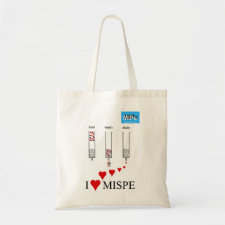
Authors: Banerji S, Peng W, Kim YC, Booksh KS
Publication date: 2006
Article title: Molecularly imprinted polymerization based surface plasmon resonance sensing for glucose detection in human urine.
Page numbers: U235-U245
DOI: 10.1117/12.686483
Editors: Cullum BM, Carter JC
Publisher: SPIE
Volume number: 6380
Conference information: Smart Medical and Biomedical Sensor Technology IV
Abstract: A novel Surface Plasmon Resonance (SPR) sensor to detect glucose using molecularly imprinted polymer (MIP) will be presented in this paper. SPR has been traditionally used as a probe for surface interaction of large molecules but harder to measure small molecules since the effective change in the SPR condition becomes smaller. The accurate measurement of glucose in complex physiological fluids like urine is particularly challenging since the constituents of these fluids vary significantly from person to person and even throughout the day for a particular individual. The polymer was prepared by crosslinking polyallyamine in the presence of Glucose Phosphate, monobarium salt (GPS-Ba) and attached to a 50 nm thin film of gold which had been sputtered on top of a glass slide, via amide coupling. Upon removal of the template, this sensor was used to detect glucose in human urine in physiologically significant levels (1-20 mg/ml). Enhancement of the glucose sensor was made possible by incorporating gold nanoparticles which improved the signal. This study has demonstrated the specific detection of glucose in a complex physiological fluid using SPR spectroscopy. The association of glucose to the imprinted polymer results in the swelling of the polymer that can be tracked by the minima in SPR spectra. The sensitivity of this method, while lower than protein based detection schemes, is sufficient for quantitative measurement of glucose in urine at physiologically significant levels without extensive pre-treatment of the sample. Given the nature of the weak non-covalent binding of glucose to the amine functional groups, the scheme used here can be adapted to detect a number of different molecular species of sizes comparable to that of glucose without the need for extensive sample preparation or use of chemicals with limited shelf life
Template and target information: glucose
Author keywords: glucose, molecular imprinting, polymerization, spectroscopy, surface plasmon resonance



Join the Society for Molecular Imprinting

New items RSS feed
Sign-up for e-mail updates:
Choose between receiving an occasional newsletter or more frequent e-mail alerts.
Click here to go to the sign-up page.
Is your name elemental or peptidic? Enter your name and find out by clicking either of the buttons below!
Other products you may like:
 MIPdatabase
MIPdatabase









